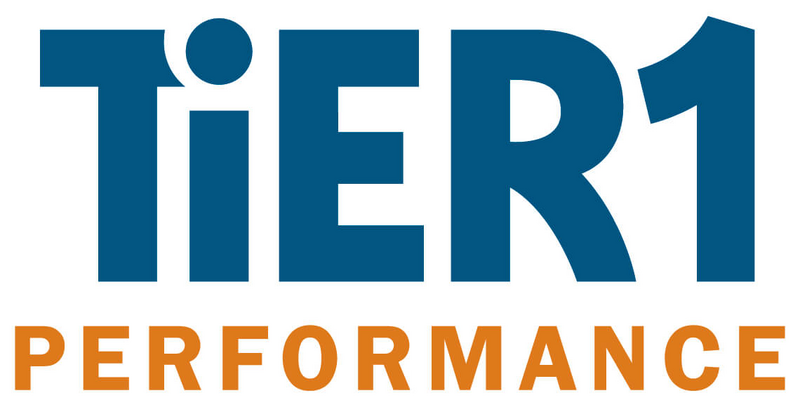TD Magazine Article
Coaching and Leadership, May 2024
What are the benefits of coaching in the workplace?
Published Wed May 01 2024
The Cambridge Dictionary defines coaching as "the job or activity of providing training for people or helping to prepare them for something." In the workplace, what are the benefits of coaching, and what is evidence of a positive coaching culture? The vendors on the following pages answer those questions and offer additional insights regarding coaching and leadership.
Coaching is a guided developmental process where the coach partners with the client to help them reach their goals. Leadership coaches also bring their expertise into the experience. So, why include coaching in a leadership development program? Three reasons:
Coaching can reinforce participants' learning. By having a coach available, participants in leadership development programs can have deeper, more valuable discussions on the topics presented in the program. That enhances their learning and makes the program more effective—and valuable.
Coaching can improve performance. As any talent development professional will tell you, the biggest challenge is to get participants to use on the job what they learn through coaching (Kirkpatrick's Level 3: transfer). Coaches work with clients to use their learning to improve their leadership skills and apply them to real, and real-time, workplace challenges.
Coaching can go where the curriculum didn't. Because the relationship between the coach and client is alive and fluid, it can go where the learning program did not by introducing new content, concepts, and techniques to help the client perform better on the job.
Coaching is a powerful tool to enhance not just learning but also performance. Include it in your leadership development programs and you'll see better results immediately.
Interest in workplace coaching has increased for a decade and shows no sign of diminishing. Many workers, particularly millennials and Gen Z, view it as a minimum requirement for joining an organization. With that, there has been an accompanying desire by employers to create and maintain a coaching culture. However, understanding what that culture looks like is less clear. What is the evidence that coaching is not only effective but has reached cultural status?
In a coaching culture, managers exhibit observable behaviors and employees have predictable reactions.
Managers:
Start every discussion or meeting with a goal.
Create psychological safety by practicing active listening.
Conclude conversations with an agreement of actions and owners.
Employees will feel that the conversations are:
Candid—the most important things are discussed transparently.
Constructive—value is created for them in the discussion.
Caring—they feel their needs are understood and considered.
The effort must be deliberate. Managers should grasp their behavior's impact, apply a coaching methodology, measure their effectiveness for improvement, and hold themselves accountable. As a result, that enhances the fostering of a coaching culture, boosting communication, collaboration, and retention.
Growth as leaders is about becoming more aware of our reactions and making conscious choices rather than simply reacting to challenging circumstances. We think of this as the problem-reacting and outcome-creating dynamic.
It can be easy to get stuck in a problem-reacting cycle, which happens when underlying assumptions or beliefs drive a leader to display behaviors that temporarily relieve anxiety or fears yet ultimately impede long-term goals and aspirations. Leaders with this patterning tend to work long hours, develop poor relationships with team members, and burn out.
Problem reacting can look like this: A leader works autonomously and takes on team members' work so that it's done right and fast. As the team receives new strategic objectives, the leader takes on more work because they doubt others will do a good job. That causes team members to feel unengaged and disconnected, leading to a lack of ownership. In turn, the leader's workload grows more intense and team performance declines. The cycle repeats.
Leaders can break this vicious cycle by regularly requesting feedback from team members to become aware of blind spots and uncover root causes of their reactive behaviors. Feedback enables leaders to gain a deeper awareness of their triggers and challenge assumptions and beliefs that limit them. Mentors and coaches can provide additional support by helping leaders recenter and anchor to their aspirations. Leaders can regularly reflect on their emotions and what guides their actions by asking themselves questions such as:
What am I feeling?
What's underneath it? (e.g., Am I seeking security by controlling what's around me at all costs?)
How is my response working against my leadership aspirations?
What actions will move me toward my leadership aspirations?
The goal is to shift from problem reacting to outcome creating. A leader embracing outcome creating will experience a challenging situation more like this: Anchored in their personal leadership aspiration, when the leader receives new strategic objectives, they pause to recognize any immediate reactions (e.g., their face flushes or throat closes) and reorient to their leadership aspirations. Then they invite the team to collaboratively map out the objective, plan, and roles based on team members' skills and growth goals. Team members are energized about the work and their ability to contribute, and the leader steps back from the details to provide broader perspective. The team achieves its objectives, and team members learn and grow in the process. Team members' trust in the leader grows, and the cycle repeats.
Moving from problem reacting to outcome creating is referred to as adaptive change. Taking root in small moments and iterative behaviors over time, this shift is transformative and instills a new mindset.
While each person's problem-reacting patterns vary, the antidote is the same: adaptive change. When we pay attention to how we impact others; seek feedback; pay attention to how we feel and act when we are triggered; and try outcome-creating ways of thinking, feeling, and behaving, then we are doing the hard work that results in adaptive change.




